College History
 Miniatures of Lt-Gen G.G. Simonds, CC, CB, CBE, DSO, ED (College No. 1596)
Miniatures of Lt-Gen G.G. Simonds, CC, CB, CBE, DSO, ED (College No. 1596)
Simonds graduated from RMC in 1925 and was commissioned into the Royal Canadian Horse Artillery. During the Second World War he held a succession of key appointments, including Command of the 2nd Canadian Corps in NW Europe, 1944-45
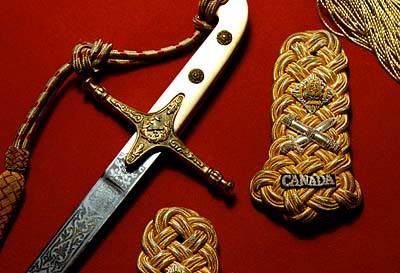 Sword & Epaulettes of Maj-Gen Chris Vokes, CB ,CBE, DSO, CD (College No. 1633)
Sword & Epaulettes of Maj-Gen Chris Vokes, CB ,CBE, DSO, CD (College No. 1633)
Vokes graduated from RMC in 1925 and was commissioned into the Royal Canadian Engineers. He held various appointments during the Second World War and succeeded his classmate Simonds in command of the 1st Canadian Infantry Division in Italy. Vokes later commanded the 4th Canadian Armoured Division in NW Europe.
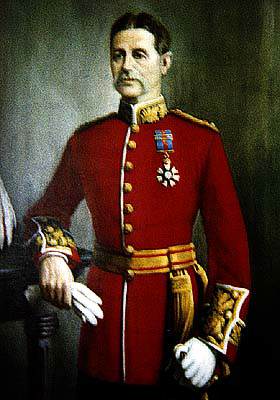 Lt-Col. Edward Osborne Hewett, C.G. (1835 - 1897)
Lt-Col. Edward Osborne Hewett, C.G. (1835 - 1897)
Hewett was a graduate of the Royal Military Academy Woolwich and serving as a Major in the Royal Engineers when he was selected in 1875 to be the first Commandant of the Military College in Canada. Promoted to Lt-Col on appointment, Hewett served as the College's first Commandant until his resignation in 1886.
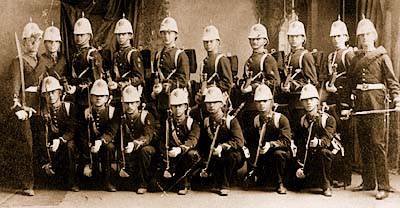 RMC Cadets in Heavy Marching Order, 1882
RMC Cadets in Heavy Marching Order, 1882
Cadets wore the standard infantry uniform of the day when the College opened in 1876. This uniform, in a slightly modified form, still survives as the College dress uniform.
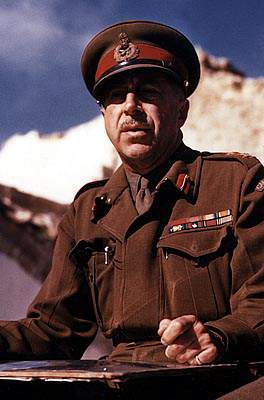 General H.D.G. Crerar, PC, CH, CB, DSO, CD, ADC (College No. 749)
General H.D.G. Crerar, PC, CH, CB, DSO, CD, ADC (College No. 749)
Crerar graduated from RMC in 1909. He served as an artillery officer in the First World War and held various appointments in the years between the wars. He was Commandant of RMC when war broke out again in 1939. Crerar commanded the First Canadian Army from 1944 to 1945.
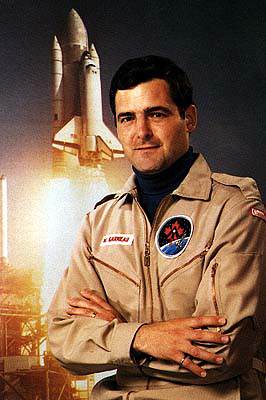 Marc Garneau, ex-cadet and astronaut
Marc Garneau, ex-cadet and astronaut
Ex-cadet, First Canadian astronaut,1984
Dockyard History
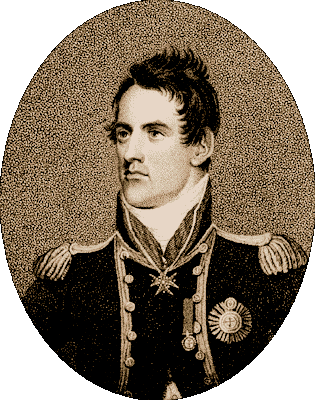 Sir James Yeo (1782 - 1818), 1813
Sir James Yeo (1782 - 1818), 1813
Yeo commanded all naval forces on the Lakes of Canada during the War of 1812. He had a distinguished service record prior to his appointment to Canada and, although he did not fight any major action on Lake Ontario, his careful use of naval power was a major factor in the successful defence of Upper Canada.
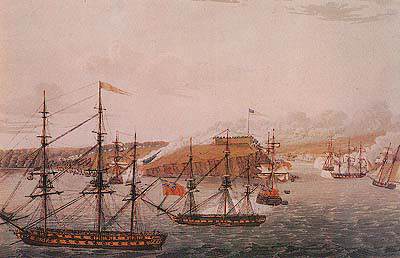 Attack on Fort Oswego by John Hewett, 1814
Attack on Fort Oswego by John Hewett, 1814
Lake Ontario, North America, May 6th, 1814, noon
Etched by Robert Havell, London, 1 May 1815
John Hewett (known 1806-1869), a Lieutenant in the Royal Marines, was the father of Lt-Col E.O. Hewett, first commandant of RMC.
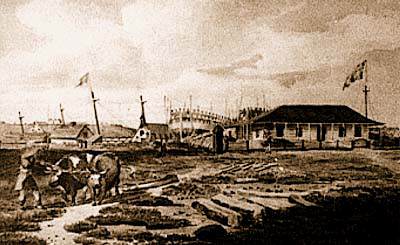 Commodore's House
Commodore's House
Commodore's House at Dockyard, 1815
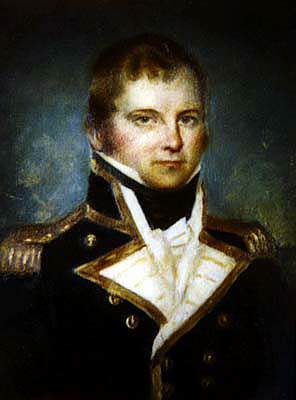 Rear-Admiral Sir Robert Barrie, K.C.B., K.C.H. (1774 - 1841)
Rear-Admiral Sir Robert Barrie, K.C.B., K.C.H. (1774 - 1841)
Barrie had a distinguished service record in the Napoleonic Wars and from 1819 to 1834 he was Commissioner of the Kingston Dockyard and Commander of the Naval Forces in Canada.
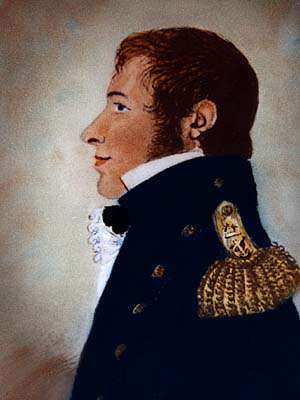 Captain Francis Brockell Spilsbury
Captain Francis Brockell Spilsbury
Spilsbury was a Lieutenant when he came to Canada in 1813 as one of Yeo's officers. He served on Lake Ontario and, at various times, commanded several of the smaller ships of the Lake Ontario Squadron. He was taken prisoner on 6 May 1814 and held until the end of the War. Following the War he was promoted to Captain and retired on half-pay.
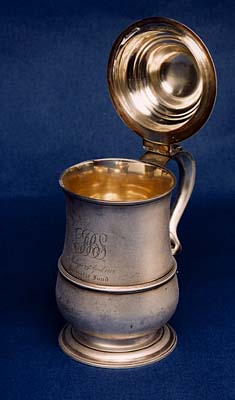 Lloyds' Patriotic Fund Silver Plate
Lloyds' Patriotic Fund Silver Plate
No official awards system existed for acts of gallantry during the Napoleonic War period. Lloyds of London established a privately funded system which made presentations to officers and men of the British forces. Silver plate was common for senior officers and swords for junior officers. This silver tankard, awarded to Lt. Spilsbury for his gallant action in cutting out an enemy ship at Malagra, Spain, on 29 April 1812, is a rare example of a silver presentation made to a junior officer.
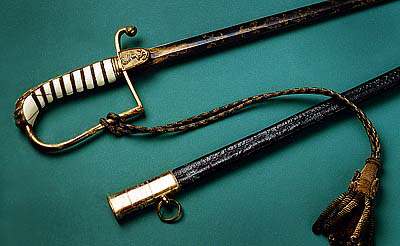 Naval Officer's Sword, Light Pattern
Naval Officer's Sword, Light Pattern
Sword of Capt. F. Spilsbury.
This type of sword was worn with evening or court dress. Spilsbury likely purchased this sword after the War on promotion to Captain.
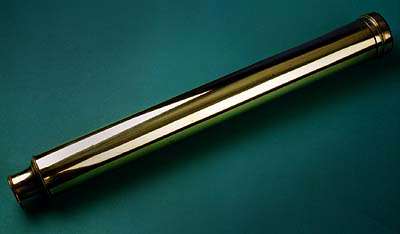 Night Glass
Night Glass
Large brass telescope owned by Captain Spilsbury and used on Lake Ontario during the War of 1812
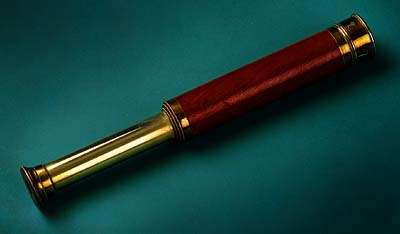 Spy Glass
Spy Glass
Douglas Arms Collection
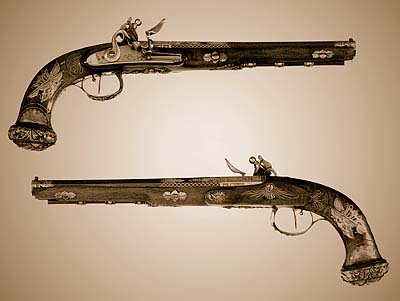 Boutet Flintlock pistols
Boutet Flintlock pistols
A pair of naval pattern presentation flintlock pistols by Nicholas Boutet of Versailles. Circa 1800-1802
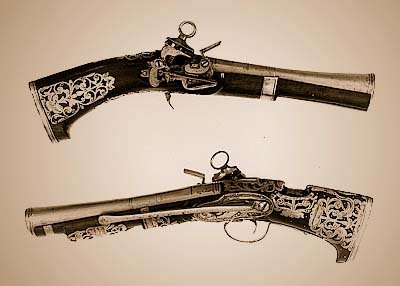 Miquelet Belt Pistols
Miquelet Belt Pistols
Pair of belt pistols by J.P.H. Almos, circa 1800.
The miquelet lock is a Spanish version of the flintlock in which the hammer and pan cover are in one piece.
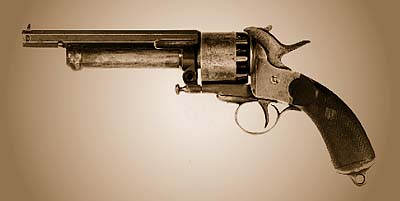 LeMat & Girard's Patent Percussion Revolver
LeMat & Girard's Patent Percussion Revolver
Manufactured in London, England, circa 1863-64.
This type of pistol was popular with officers of the Confederate Army during the U.S.Civil War. Markings on the left grip suggest that this revolver was confiscated from a shipment bound to the Confederate States, via Mexico, and subsequently issued to French forces serving in Mexico with Maxillian.
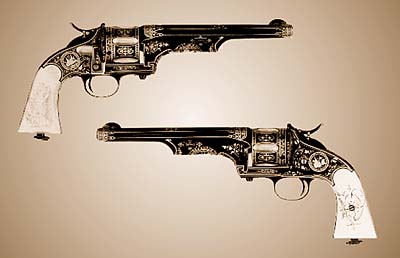 Merwin and Hulbert First Model Army Revolvers, circa 1880
Merwin and Hulbert First Model Army Revolvers, circa 1880
These presentation revolvers are profusely decorated with gold inlay and damascened ornament and are considered to be among the finest surviving examples of Merwin & Hulbert pistols.
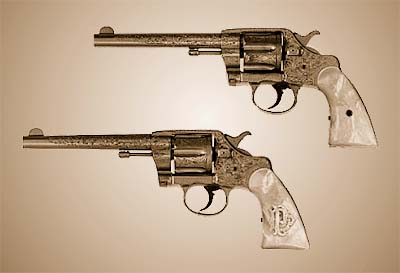 Colt Model 1889 Double Action Revolvers
Colt Model 1889 Double Action Revolvers
These Model 1889 Double Action revolvers are outstanding examples of engraved Colt firearms. They were shipped to Mexico from the Colt factory on 2 April 1892.
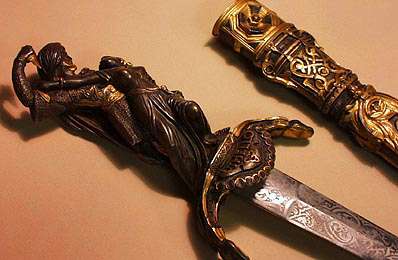 Dagger - c. 1845/50
Dagger - c. 1845/50
Possibly of French origin, in the manner of Félicie de Fauveau.
This ornate dagger is decorated with scenes from Shakespeare's Othello
"Yet she must die, else she'll betray more men.
Put out the light, and then put out the light;
If I quench thee, those flaming minister
I can again they former light restore..."
- Othello, Act V, Scene 2
Leinster Plate
 100th Regiment Badge
100th Regiment Badge
Badge of the 100th (Prince of Wales's Royal Canadian) Regiment, 1860
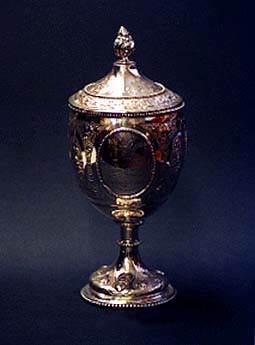 Cup, 1864
Cup, 1864
"Presented to the Officers of the Prince of Wales's Royal Canadian Regiment by Lieutenant C.P. Lowry on Promotion, 1864"
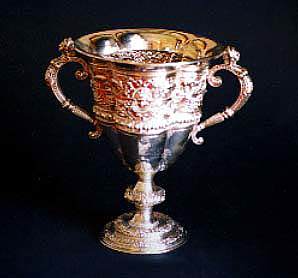 Cup, 1877
Cup, 1877
Presented to the Officers' Mess 100th PWRC by Colonel the Honourable C.J. Addington on Retirement, September 1877.
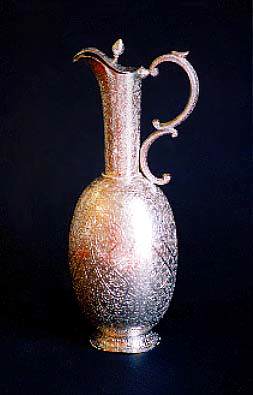 Wine Jug, c. 1880
Wine Jug, c. 1880
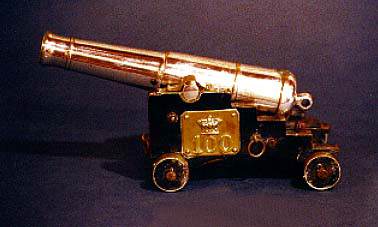 Model Gun
Model Gun
Presented to the Officers 1st Battn P.W.s LEINSTER Regt Royal Canadians by Lieutenant C.E.B. Blunt 1891
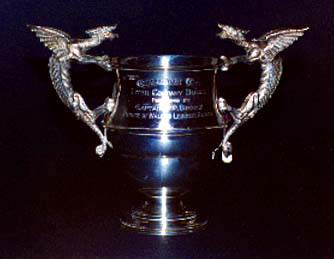 Inter-Company Boxing Trophy, 1910
Inter-Company Boxing Trophy, 1910
Presented by Captain W.P. Brooke, c. 1910
Miscellaneous
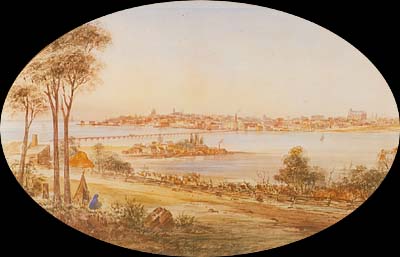 View of Kingston, 1858
View of Kingston, 1858
A watercolour by W.F. Friend showing a view of Kingston from Barriefield village. The northern end of Point Frederick (now part of the RMC campus) appears in the middle ground.
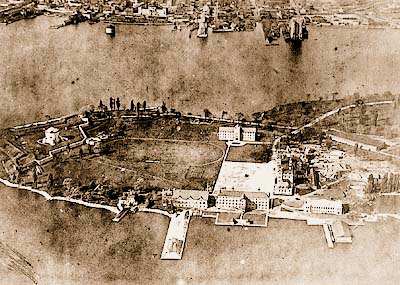 Aerial view of RMC, 1919
Aerial view of RMC, 1919
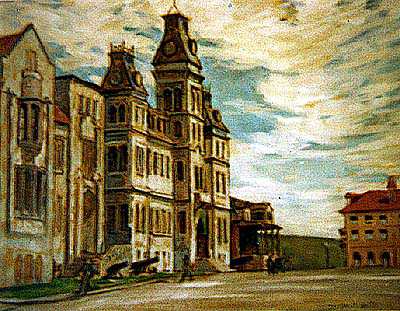 Mackenzie Building circa 1944
Mackenzie Building circa 1944
Oil on canvas by Douglas M. Betts
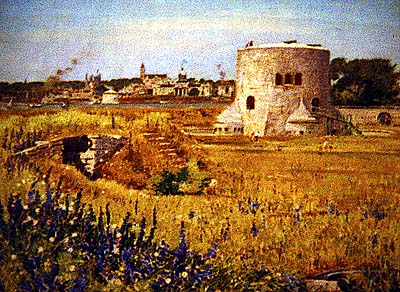 Fort Frederick, 1952
Fort Frederick, 1952
Oil on canvas by R.W. Pilot.
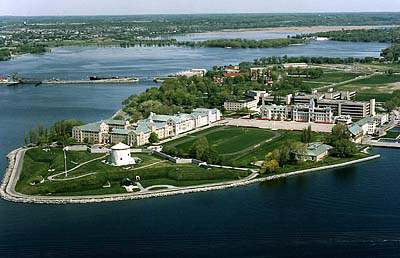 Aerial view of RMC, 1985
Aerial view of RMC, 1985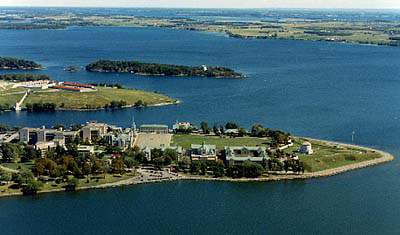 Aerial view of RMC, Fort Henry, Cedar Island, 1994
Aerial view of RMC, Fort Henry, Cedar Island, 1994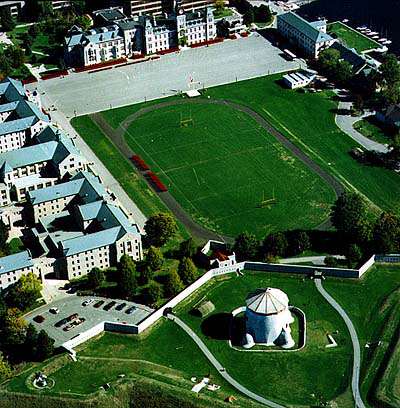 Aerial view of Campus, 1996
Aerial view of Campus, 1996